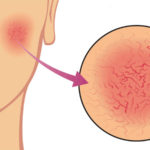Transcranial Magnetic Stimulation (TMS) is a non-invasive treatment for depression that substitutes the other depression treatments and is usually used whenever the rest haven’t worked. This procedure includes magnetic fields that stimulate brain nerve cells to lower the risk of depression. This treatment is also known as repetitive TMS (rTMS) because it incorporates dispensing repeated magnetic pulses as an antidepressant. This procedure may also help treat OCD, PTSD, schizophrenia, Parkinson’s disease, and anxiety.

To fully undergo this procedure, you will go for five sessions a week for four to six weeks to ensure it works for you. A qualified doctor can perform this treatment in their office, or the clinic provided the necessary equipment is in place.
Depression is a mood where you are suddenly not interested in activities and have a low mood. The recommended treatment for depression is medication, talk therapy, or treatment procedures like TMS. Research has shown that the treatments normalize your brain and reduce symptoms of depression. Doctors can also offer the treatments hand in hand with talk therapy to ensure adequate recovery for the patient. Some medications are antidepressants, anxiolytics, and SSRIs; therapy may include psychotherapy and cognitive-behavioral therapy. If these have not worked or caused severe side effects, TMS therapy might be recommended to treat depression.
Although TMS is very effective, it has side effects like seizures, discomfort, hearing loss, or fainting. Other significant side effects may be new or exacerbated psychiatric symptoms like hypomania or increased suicidality. Although these are rare cases, they occur, particularly with children and teenagers who have brains still undergoing neurodevelopment. As a result, there may be increased chances of side effects, according to research. TMS is still under investigation as a treatment for children and teenagers who do not respond to medications. Teenagers and children may have side effects ranging from headaches, scalp pains, syncopal episodes, seizures, and rare cases of major side effects like adverse neurocognitive effects or aberrant alterations in neuroplasticity, among others.
Seizures seem to be the main concern, with statistics showing that less than 1% of patients might have a seizure which is relatively comparable to the percentage of patients that have episodes from taking antidepressants. Those who experience seizures from the procedure and do not have any history of epilepsy will recover and don’t typically experience recurrent seizures. However, if you have taken considerable amounts of alcohol before the TMS therapy, you are at an increased risk.
As mentioned earlier, TMS may also help in treating other conditions. For example, for OCD (obsessive-compulsive disorder) patients, TMS reduces the hyperactivity in the brain’s prefrontal cortex and striatum, which causes OCD. This procedure reduces the OCD symptoms, although it is recommended after your body has not responded to the medications and psychotherapy. For anxiety caused by excessive activity in the prefrontal cortex, TMS helps tone down the activity, thereby reducing anxiety symptoms. TMS can also be used to treat generalized anxiety disorder (GAD).
PTSD (post-traumatic stress disorder) patients also benefit from TMS when used hand in hand with cognitive processing therapy. TMS can alter how the prefrontal cortex internalizes fear and concern. In case of stroke, TMS helps in recovery and regaining voluntary movement. This procedure helps stroke patients get back to normalcy by stimulating the motor cortex, a brain section that allows us to control our movements. Patients with dysphagia (a condition stroke patients deal with) benefit from the motor cortex stimulation enabling them to swallow food.
Patients with schizophrenia suffer from auditory hallucinations caused by overactivity of the temporoparietal cortex, the brain part responsible for language. Dispensing the magnetic pulses to this part regulates the activity to reduce the hallucinations experienced by 75% of schizophrenia patients. Parkinson’s disease, on the other hand, is a nervous system disorder that includes freezing of gait, motor dysfunction, and tremors. TMS can help deal with freezing gait, which is a frozen feeling that makes you unable to move while walking.
About a third of the patients who have undergone TMS therapy recover completely and do not have any more depression symptoms; these patients are those that medications and other forms of treatment haven’t worked for.




Leave a Reply